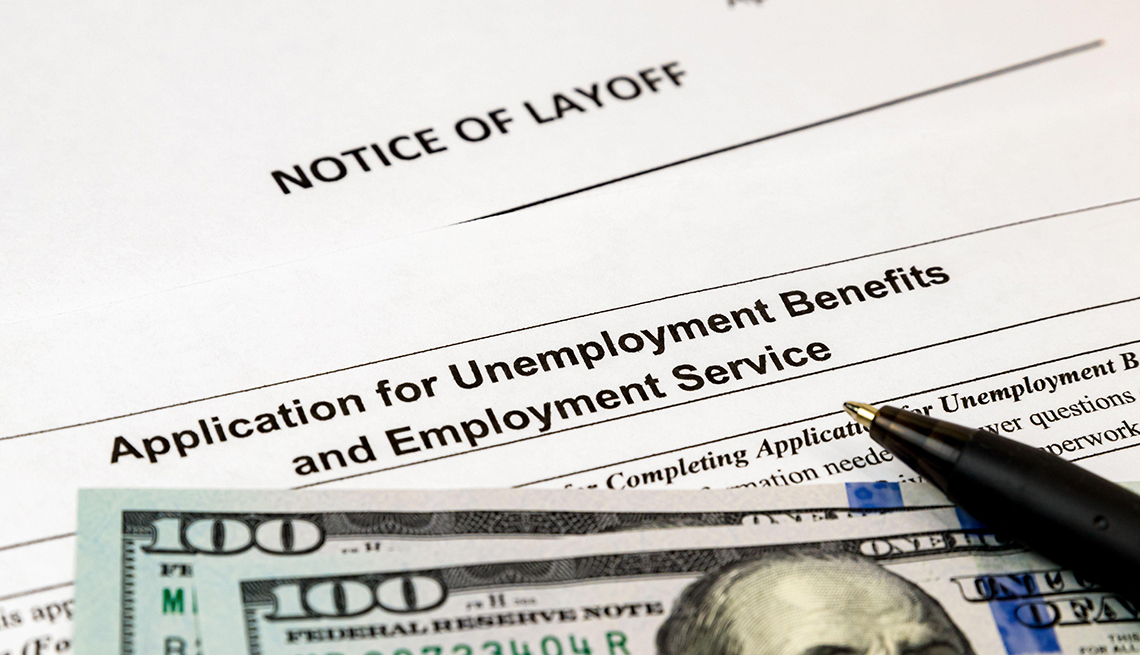AARP Hearing Center
More than 40 states have received approval to pay an additional $300 per week in unemployment benefits to their residents, according to the Federal Emergency Management Agency (FEMA).
Unemployment has skyrocketed since many businesses shut down temporarily to slow the spread of the coronavirus. More than 880,000 people filed new claims for benefits during the week ending Sept. 5, and the August unemployment rate for workers age 55 and older was 7.7 percent.
In order to provide the additional $300-per-week benefit, states must apply to FEMA to receive a Lost Wages Grant. States also must agree to pay the first $100 per week that each person receives in unemployment benefits. That means that if you don't currently qualify for at least $100 per week under your state's normal policy for benefits, you will not be eligible to receive the extra $300 from the federal government.
Two other things to keep in mind: First, it takes time for states to update the computer systems that handle unemployment benefits. So even if your state has been approved for a Lost Wages Grant, you might not see the extra money added to your benefits immediately. But if you're eligible, the additional $300 weekly benefit is retroactive to Aug. 1. And second, although the grant program is approved to run until Dec. 27, the $44 billion reserved for these benefits could be exhausted well before then, given that millions of Americans are unemployed.
FEMA has approved the following states to provide the additional $300-per-week benefit. Clicking on the name will take you to that state's website to apply for unemployment. This list will be updated as more states are approved; the deadline to apply is Sept. 10.
- Alabama (approved Aug. 21)
- Alaska (approved Aug. 23)
- Arizona (approved Aug. 15)
- Arkansas (approved Aug. 25)
- California (approved Aug. 21)
- Colorado (approved Aug. 16)
- Connecticut (approved Aug. 24)
- Delaware (approved Sept. 2)
- District of Columbia (approved Sept. 8)
- Florida (approved Aug. 29)
- Georgia (approved Aug. 23)
- Hawaii (approved Aug. 29)
- Idaho (approved Aug. 19)
- Illinois (approved Sept. 1)
- Indiana (approved Aug. 21)
- Iowa (approved Aug. 15)
- Kansas (approved Sept. 7)
- Kentucky (approved Aug. 21)
- Louisiana (approved Aug. 15)
- Maryland (approved Aug. 19)
- Massachusetts (approved Aug. 21)
- Michigan (approved Aug. 21)
- Minnesota (approved Aug. 29)
- Mississippi (approved Aug. 22)
- Missouri (approved Aug. 16)
- Montana (approved Aug. 18)
- Nebraska (approved Sept. 9)
- New Hampshire (approved Aug. 24)
- New Jersey (approved Sept. 4)
- New Mexico (approved Aug. 15)
- New York (approved Aug. 23)
- North Carolina (approved Aug. 21)
- North Dakota (approved Aug. 31)
- Ohio (approved Aug. 26)
- Oklahoma (approved Aug. 18)
- Oregon (approved Aug. 28)
- Pennsylvania (approved Aug. 2)
- Rhode Island (approved Aug. 22)
- South Carolina (approved Sept. 1)
- Tennessee (approved Aug. 22)
- Texas (approved Aug. 21)
- Utah (approved Aug. 16)
- Vermont (approved Aug. 22)
- Virginia (approved Aug. 26)
- Washington (approved Aug. 24)
- West Virginia (approved Aug. 27)
- Wyoming (approved Aug. 28)
Editor’s Note: This article was originally published on August 26, 2020. It has been updated with additional states offering expanded benefits.































































